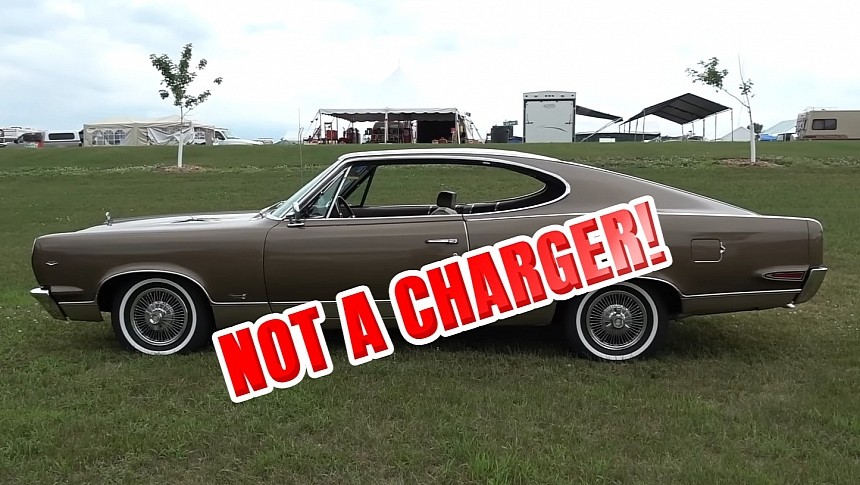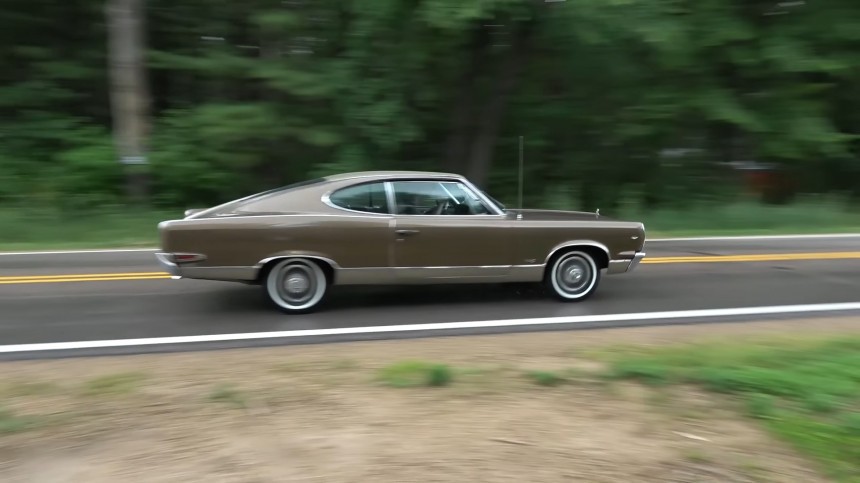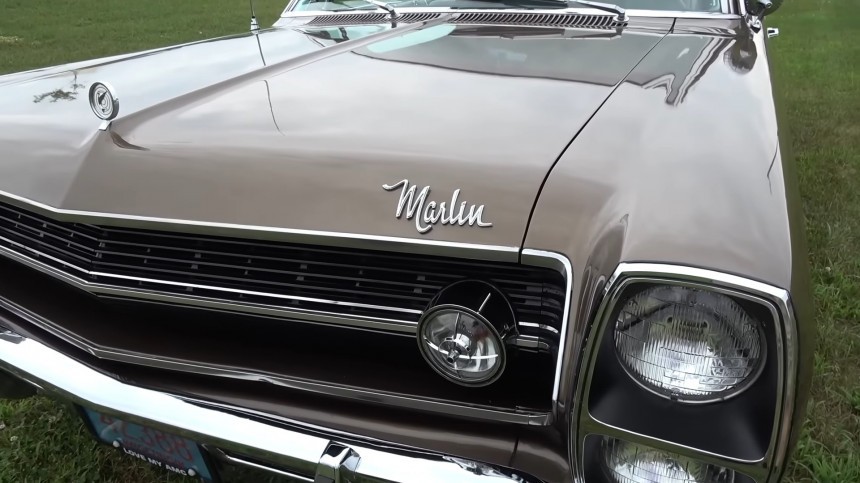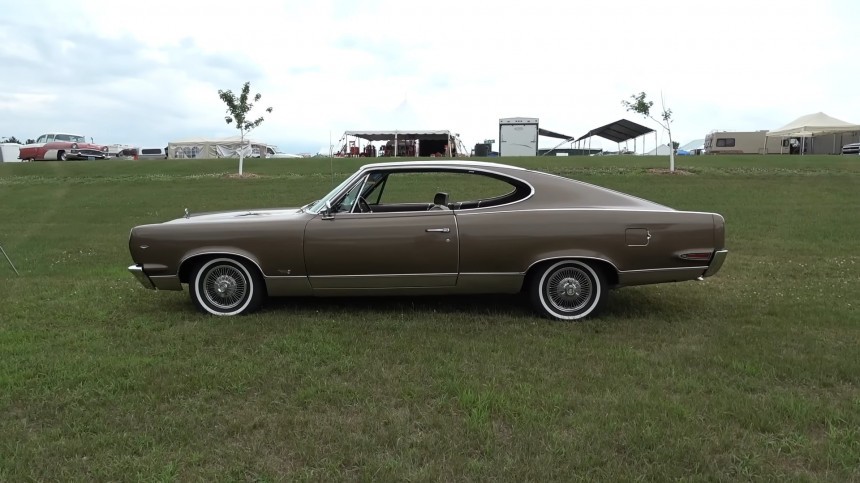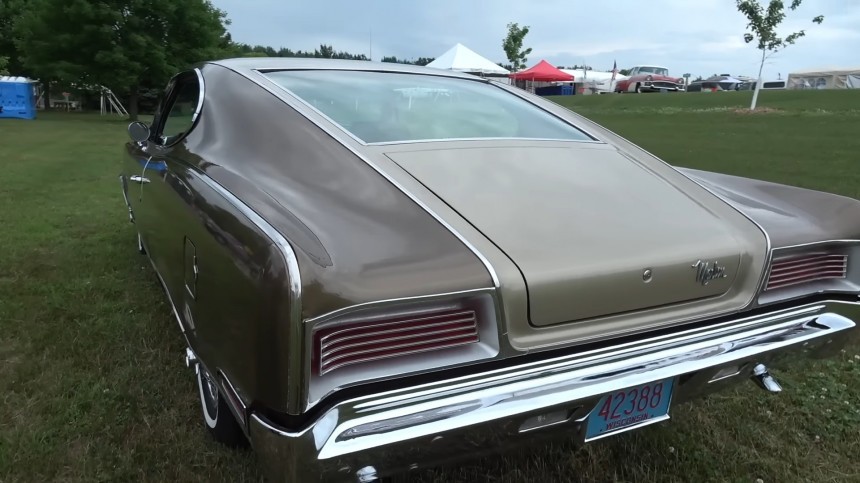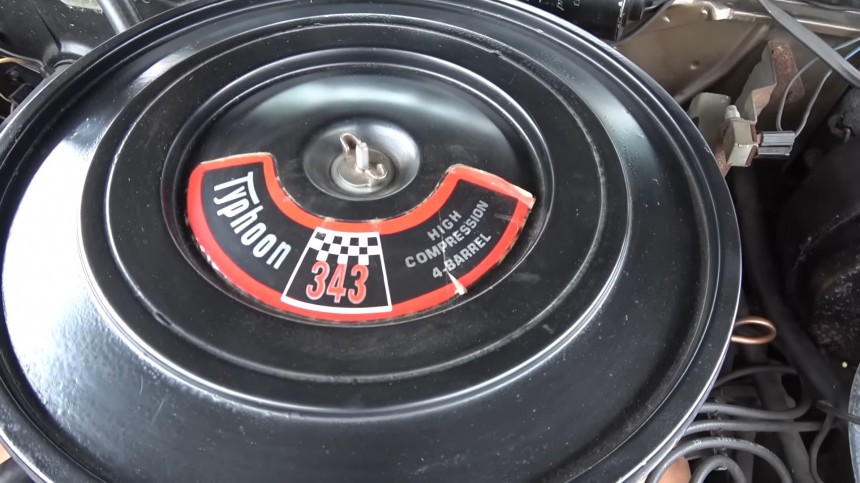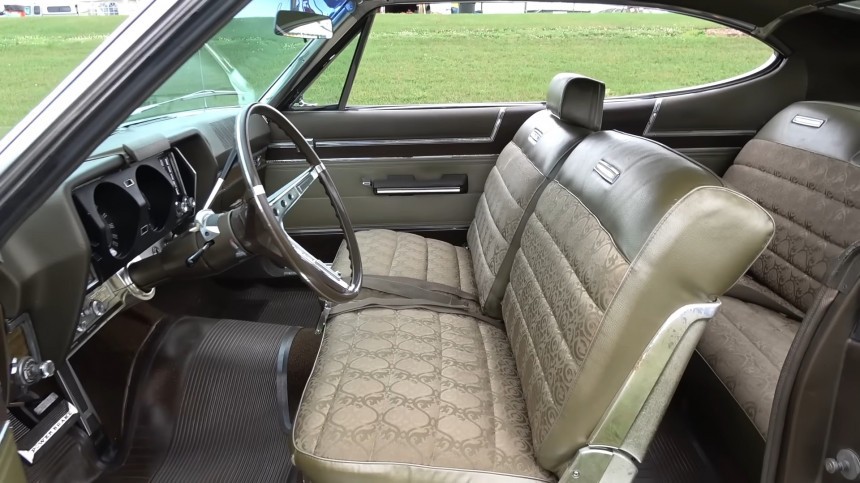Humans have always drawn inspiration from nature when expressing impressive achievements, significant milestones, or luring in profit-generating buyers. The latter is common practice in the auto industry, and 1960s America can provide dozens of examples.
A wild stallion, a powerful wild feline, a mythical avian, or voracious fish served as inspiration for the names of some of America’s most popular nameplates. Whether used to boast performance, refinement, elegance, power, or any combination thereof, Mother Nature has been Detroit's go-to fountain of creativity for many iconic metal creations.
Evolution, however, has laws that do not bow down to the will of man, and not all animals get the spoils of being celebrated with a metal incarnation of piston and fire. And only some of those who get that nobility titles are worthy of them or accurately reflect their animal eponym.
As far as we know today, the black marlin is the fastest fish in the ocean, topping an eye-popping 80 mph (129 kph). And back in 1965, American Motors Corporation had the idea of slapping the name on one of its automobiles. It was a sales flop of grand proportions: the car (christened Marlin) only came in a little over 17,000 units.
That wouldn’t be the worst production run in the history of internal combustion; except this number accounts for the entire three-year production span of the fishy model. In 1967 the name was dropped (following the trend of sales graphs) after only 2,545 examples were assembled in the final year.
That means an AMC Marlin from 1967 is an even rarer sight today than it was 56 years ago – and perhaps it’s not doing the car full justice, but this is the course of mechanical selection. Some vehicles just don’t have that public appeal, no matter how good they are.
And the AMC Marlin falls right in that club of misfits with its first-generation Dodge Charger fastback silhouette, Ambassador front clip, and overall lackluster impended by its absence from sales-boosting racing.
About that Charger reference: although the Dodge came out one year after the Marlin, please remember that the Charger II concept came out in 1965, just like the AMC’s fish. Alternatively, we can agree that the Mopar and the Marlin were pretty similar in profile to the other famous fish, the Barracuda of 1964.
Whichever the case, one thing is for sure: the AMC wasn’t destined for the fame of its period brethren, but it didn’t stop it from trying. One particular example from the last production year has a heartbreaking story.
Coming out as the swansong of the nameplate, the car we see in the video – yet another treasure chest hunt trophy of Lou Costabile, the vlogger with a sixth sense for classics – was bought and owned by a lovely lady for the first decade of its life.
In 1978, the Marlin was put up for sale, and a buyer quickly showed up with the requested $350. The selling woman accepted $300, finally, but asked the new owner to bring it back to her after he restored the automobile. The lady simply wanted to admire the car in its showroom glory one last time.
The renovation process was rather lengthy, despite the car’s overall good condition at the moment of purchase in ’78. (Sometimes, a piston project takes far longer than previously anticipated; in some cases, it never even begins). But finally, in 1985, the Marlin’s new owner - Bob Wunrow – kept his promise and drove the car to the first owner’s house.
By then, the woman’s deteriorating health had constrained her to a wheelchair, but the visit filled her heart with joy and brought tears to her eyes. One month after she got to see her beloved Marlin refreshed, she went to teach angels, cherubs, and other inhabitants of the Garden of Eden a thing or two about V8s and cubic inches.
Bob Wunrow kept the Marlin to this day – see him drive it in the video – and the elusive AMC looks the part. Dressed in Stallion Brown & Yuma Tan paint and packing the maker’s top-rated V8 for that year, the 343 cubic-inch “Typhoon” V8, the car is a looker.
By 1967, air conditioning was no longer a feature that would “wow” potential buyers; AMC’s roots commended that the Marlin came with the luxury accessory. American Motors Corporation was formed by the merger of Nash-Kelvinator and Hudson (the largest corporate merger in U.S. history up to that May 1, 1954 moment). Nash-Kelvinator pioneered “conditioned air” systems in automobiles, and AMC could't dishonor the legacy.
It's not just the cool cabin comfort that makes the 1967 Marlin stand out from the rest of the herd. The 343-CID (5.6-liter) V8, armed with a single four-barrel carburetor, spits out 280 hp (284 PS) at and 365 lb-ft (495 Nm) for the three-speed automatic (pay no attention to the lifter noise). Both drivetrain components are original, by the way, and so is the limited-slip "Twin-Grip" rear end.
The vertical radio is another Nash legacy (the Airflyte Super 600 from 1949 has a similar architecture for the entertainment equipment). The intricate embroidery on the upholstery aligns with the model's “personal luxury” claims.
The 1967 Marlin was based on the same platform as the AMC’s Ambassador and shared many components and sheet metal with its mid-sized luxury cousin. In fact, the jacking instruction sticker in the Marlin’s trunk is actually an illustration of an Ambassador two-door hardtop.
In its three-year history, the model came in two versions: the 112-inch wheelbase (2.85 meters) from ’65-’66 and the longer – and better proportioned – 118-inch (3.0-meter) for the final year. Even if the 1967 version offered more interior space (it was also four inches / 10 cm wider than in previous years), customers had lost any interest in the car by then.
Also, AMC’s decision to stay out of motorsport wasn’t helping showroom traffic at all, especially in an era when the horsepower wars were fought on all fronts, road and track alike. After all, the publicity gains from high-speed events had proved to be a bullet-proof sales incentive for numerous other nameplates.
Born as a rare car in 1967, the AMC Marlin is all the more unicornian 56 years later, and this particular example (thoroughly enjoying a 45-year-long same-owner history) is a throwback to one of America’s undeservingly extinct makes.
Evolution, however, has laws that do not bow down to the will of man, and not all animals get the spoils of being celebrated with a metal incarnation of piston and fire. And only some of those who get that nobility titles are worthy of them or accurately reflect their animal eponym.
As far as we know today, the black marlin is the fastest fish in the ocean, topping an eye-popping 80 mph (129 kph). And back in 1965, American Motors Corporation had the idea of slapping the name on one of its automobiles. It was a sales flop of grand proportions: the car (christened Marlin) only came in a little over 17,000 units.
That means an AMC Marlin from 1967 is an even rarer sight today than it was 56 years ago – and perhaps it’s not doing the car full justice, but this is the course of mechanical selection. Some vehicles just don’t have that public appeal, no matter how good they are.
And the AMC Marlin falls right in that club of misfits with its first-generation Dodge Charger fastback silhouette, Ambassador front clip, and overall lackluster impended by its absence from sales-boosting racing.
Whichever the case, one thing is for sure: the AMC wasn’t destined for the fame of its period brethren, but it didn’t stop it from trying. One particular example from the last production year has a heartbreaking story.
Coming out as the swansong of the nameplate, the car we see in the video – yet another treasure chest hunt trophy of Lou Costabile, the vlogger with a sixth sense for classics – was bought and owned by a lovely lady for the first decade of its life.
The renovation process was rather lengthy, despite the car’s overall good condition at the moment of purchase in ’78. (Sometimes, a piston project takes far longer than previously anticipated; in some cases, it never even begins). But finally, in 1985, the Marlin’s new owner - Bob Wunrow – kept his promise and drove the car to the first owner’s house.
By then, the woman’s deteriorating health had constrained her to a wheelchair, but the visit filled her heart with joy and brought tears to her eyes. One month after she got to see her beloved Marlin refreshed, she went to teach angels, cherubs, and other inhabitants of the Garden of Eden a thing or two about V8s and cubic inches.
By 1967, air conditioning was no longer a feature that would “wow” potential buyers; AMC’s roots commended that the Marlin came with the luxury accessory. American Motors Corporation was formed by the merger of Nash-Kelvinator and Hudson (the largest corporate merger in U.S. history up to that May 1, 1954 moment). Nash-Kelvinator pioneered “conditioned air” systems in automobiles, and AMC could't dishonor the legacy.
It's not just the cool cabin comfort that makes the 1967 Marlin stand out from the rest of the herd. The 343-CID (5.6-liter) V8, armed with a single four-barrel carburetor, spits out 280 hp (284 PS) at and 365 lb-ft (495 Nm) for the three-speed automatic (pay no attention to the lifter noise). Both drivetrain components are original, by the way, and so is the limited-slip "Twin-Grip" rear end.
The 1967 Marlin was based on the same platform as the AMC’s Ambassador and shared many components and sheet metal with its mid-sized luxury cousin. In fact, the jacking instruction sticker in the Marlin’s trunk is actually an illustration of an Ambassador two-door hardtop.
In its three-year history, the model came in two versions: the 112-inch wheelbase (2.85 meters) from ’65-’66 and the longer – and better proportioned – 118-inch (3.0-meter) for the final year. Even if the 1967 version offered more interior space (it was also four inches / 10 cm wider than in previous years), customers had lost any interest in the car by then.
Born as a rare car in 1967, the AMC Marlin is all the more unicornian 56 years later, and this particular example (thoroughly enjoying a 45-year-long same-owner history) is a throwback to one of America’s undeservingly extinct makes.
